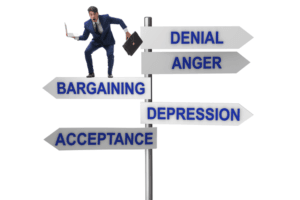In a death spiral, destruction is so near and so inevitable that any attempt to avoid it becomes valid. By evoking the dwindling seconds before a plane crash, every other option looks better by comparison. Substantially lowered visibility leaves them needing clarification and direction, and for that their instruments are essential.
Enter the Short Sellers
X shoe brand is the highest volume product manufactured by the company, and it requires little manufacturing attention. Financial statement of the company finds out that one of its footwear brands (X shoes) is resulting in a higher amount of fixed costs, which he finds unusual as such a phenomenon has never occurred since the inception of the company. The death spiral or the downward demand spiral occurs when an entity finds itself in a series of troubles.
It ultimately impacts the fixed costs again, thus, causing it to go even higher. The entity ends up feeling trapped in a spiral where there is no way out and finds itself on the verge of bankruptcy. Death spiral economics is a situation where an entity finds itself trapped in specific problems that arise due to a non-stop rise in fixed costs. However, the company chooses to lower all its overhead costs by cutting down on the volume of production of goods or services that it offers its customers.
The Last Fighter Pilot
- What the instrument registered as level, meanwhile, felt like a turn to the left.
- An Air Safety Institute scare-tactic training video, “178 Seconds to Live,” follows a pilot through the disorientation of a classic graveyard spiral.
- In such situations, the business may decide to end production of a product that are no longer demanded by customers, leading to closure of departments to save cost.
- The graveyard spiral begins when a plane flying in these conditions enters a gentle turn.
- Without a clear view of the horizon to correct against, the pilot can become so disoriented that a total loss of control results, ending in a crash.
- Death spirals occur because the pilot feels the descent but not the turn.
A company that issues this type of convertible bond is probably desperate for cash to stay afloat. Shaun Conrad is a Certified Public Accountant and CPA exam expert with a passion for teaching. After almost a decade of experience in public accounting, he created MyAccountingCourse.com to help people learn accounting & finance, pass the CPA exam, and start their career. Encyclopedia.com gives you the ability to cite reference entries and articles according to common styles from the Modern Language Association (MLA), The Chicago Manual of Style, and the American Psychological Association (APA). “Oftentimes, one given sense that has the most precise information will dominate perception,” says Fischer. “This kind of thing happens all the time with vision and audition, like when you try to judge the location of something based on hearing it.
Death Spiral Debt: What it is, How it Works, Why it’s Created
Our inner ears are fantastic at judging sudden movements, but gradual change? what is a fiscal year This is what happens when the pilot is tricked by their vestibular sense, “which allows you to perceive how your body is oriented in space when you don’t have enough visual information to go on,” he adds. A death spiral, or graveyard spiral, as it’s otherwise known, is caused by our innate impulse to rely on our sensory instincts. Sometimes a pilot can sense that the plane is descending, but feel confused as to why.
In general, convertible debt yields interest or dividends but also can be converted to common stock shares. Both types of debt are hybrid securities with attributes of both bonds and stocks. Death spiral financing is the result of a badly structured convertible financing used to fund primarily small cap companies in the marketplace, causing the company’s stock to fall dramatically, which can lead to the company’s ultimate downfall. But its metaphorical life abandons the work that made death spirals in aviation avoidable—the steady, mundane habit of cross-referencing one’s fallible perceptions to the reality of the horizon.
By putting some of his weight along the entire length of the forward blade, more stability can be created for the male as he supports his partner. The death spiral’s lesson is that logic that seems intuitive needs to be calibrated against measured reality. The perception that the ACA is in a death spiral, for example, requires calibration against the realities of spending decisions and wealth distribution. America pays more than any other industrialized country for its health care, which nevertheless does less to extend its citizens’ lives. Those who encountered poor visibility mid-flight told harrowing tales of disorientation and confusion. Surrounded on all sides by milk-white fog or hazy darkness, pilots entered a world where nothing behaved as it should.
Furthermore, traders short the stock in the expectation that the stock price will continue to dive. This drop in price amended tax return may cause more bondholders to convert because the lower share price means that they will receive more shares. The death spiral is one of a number of required maneuvers in a pairs competition. The quality of the move is assessed by a panel of judges using a number of criteria and a series of marks allotted. These marks contribute to the overall score for the skaters’ performance. Media, pundits, and think tanks all weighed in on whether or not the label applies to Obamacare and its health-care exchanges.
This surprisingly common flight issue contributed to Kobe Bryant’s helicopter crash
Some small companies rely on selling convertible debt to large private investors (see private investment in public equity) to fund their operations and growth. This convertible debt, often convertible preferred stock or convertible debentures, can be converted to the common stock of the issuing company at a discount to the market value of the common stock at the time of each conversion. This absence seems particularly lamentable in current discussions of the ACA, given how intensely felt most people’s policy positions seem to be. The death spiral works as a metaphor in this case because it fits neatly into a larger narrative of scarcity. That young healthy people are not buying health insurance on the exchanges seems a rational choice, given their precarious financial state. ABC Limited is in the business of various types of footwear manufacturing.
Sometimes, such cases of death spiral financing lead to drastic falls in stock prices, reducing its market capitalization, and resulting in competitors taking over the market. It is necessary to stimulate growth and restore the confidence of employees and management so that they do not reach the point of no return. Sometimes, it requires intervention by the government, which may provide funding to bring the company or perhaps an economy out of the adverse condition. It is possible that the accounts department of ABC Limited equally distributed all the fixed costs based on volume for all the brands that the company produces, and as a result of this, X shoes tend to reflect the higher amount of fixed costs.
The death spiral begins as the male faces toward his partner and, keeping hold of one of her hands, begins to crouch and shift his weight downward and to the rear. This allows him to maintain his balance as the female begins to spiral around him. Companies willing to agree to financing on these terms often could not obtain funding through any other means due to their early development stage or credit risk profile. The terms, though viewed by some as onerous, give the lender a potential way to recover their debt regardless of what happens to the shares of the company, and the company easy access to dilutive but relatively cheap funding in terms of cash cost. The lender would have a potentially greater gain if the shares were to increase in value, but if they decrease in value, there is some protection.
This term is used when a company tries to cut down overhead costs by reducing the number of products or services being offered. If overhead costs are not cut down accordingly, the company will get higher per unit fixed costs. This will force them to increase prices, which will, in turn, reduce demand, resulting on even higher fixed costs per unit. In cost accounting and managerial accounting, the term death spiral refers to the repeated elimination of a manufacturer’s products which will result in spreading the fixed manufacturing overhead costs to fewer products. The entity in such a situation of death spiral phenomenon feels compelled enough to increase the selling prices of the goods or services that it offers to its customers, which in return impacts the demand for its goods or services, causing it to lower down.





